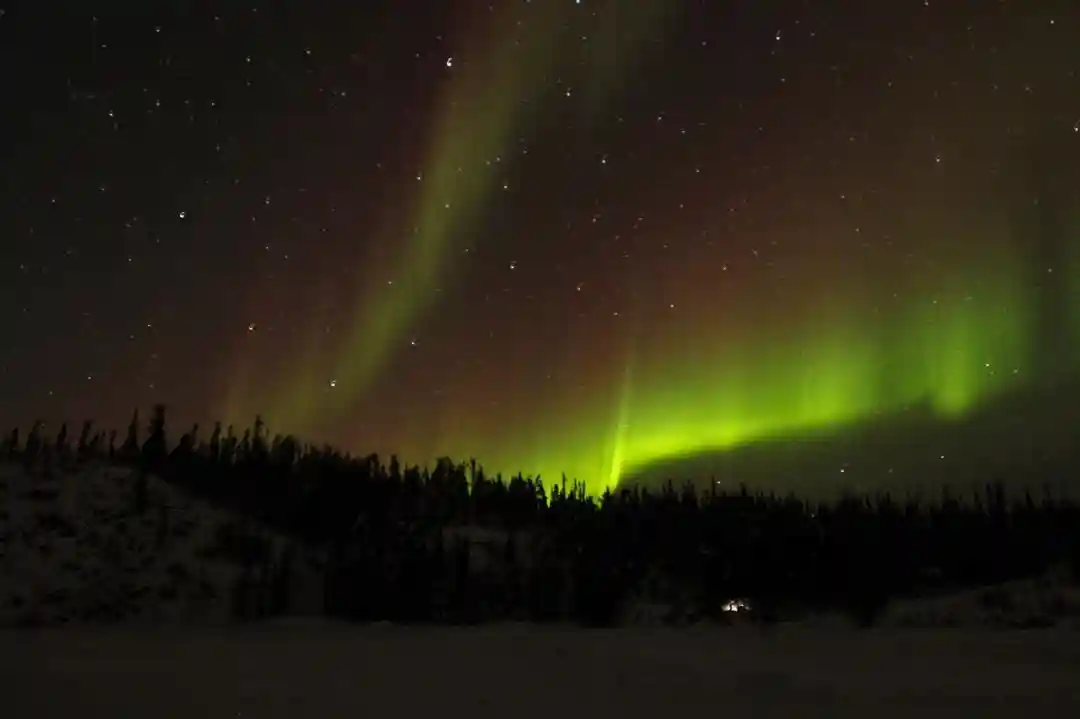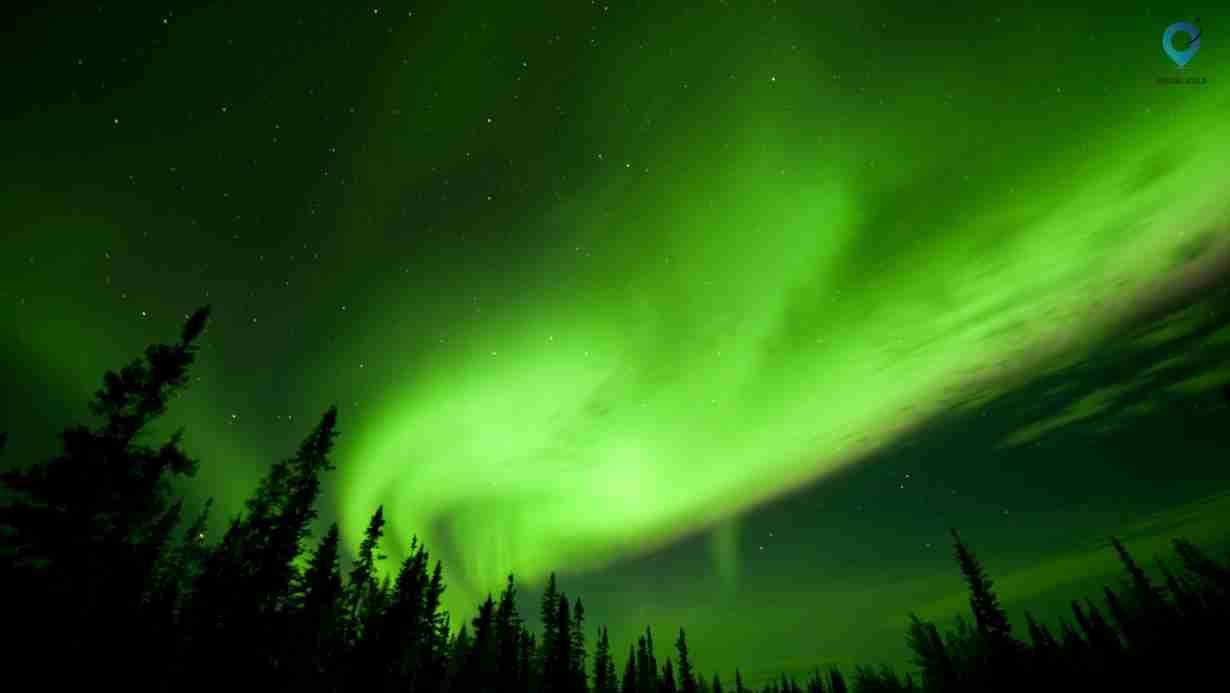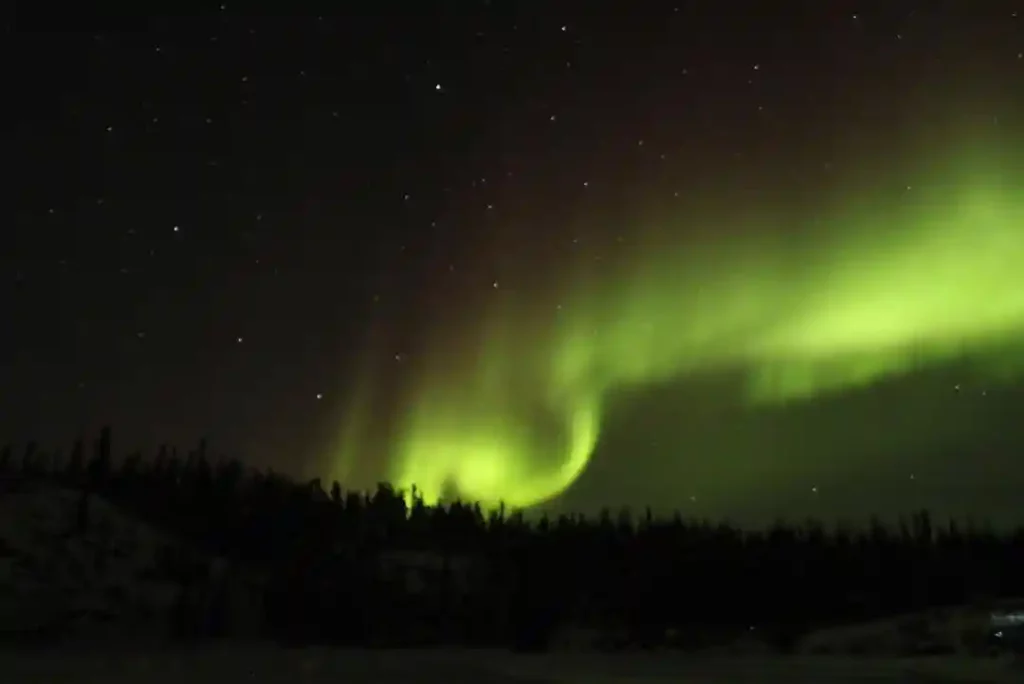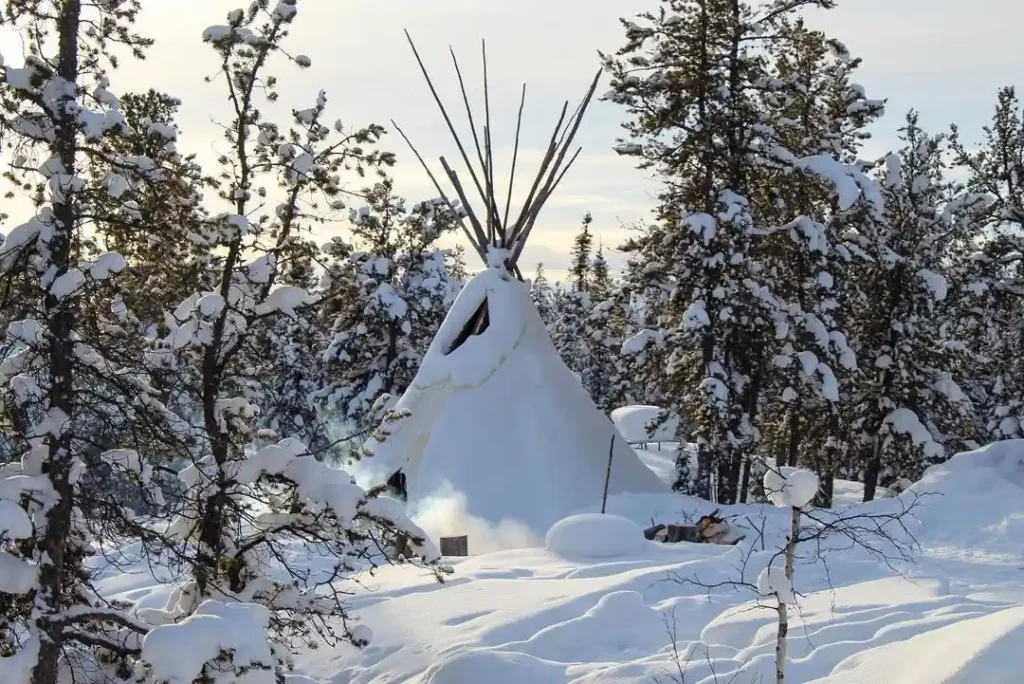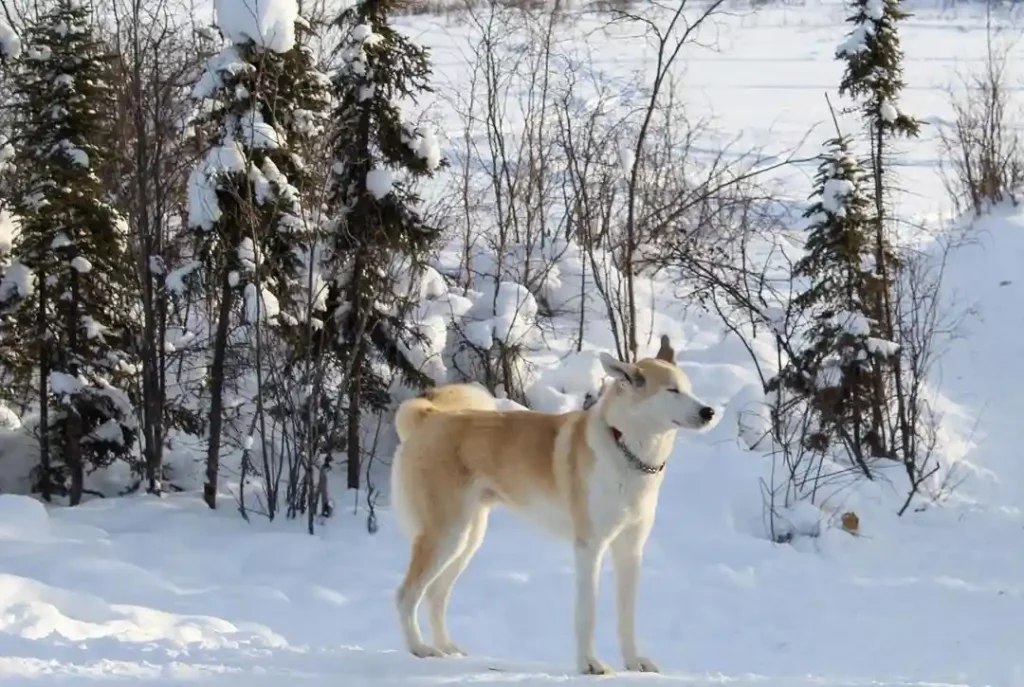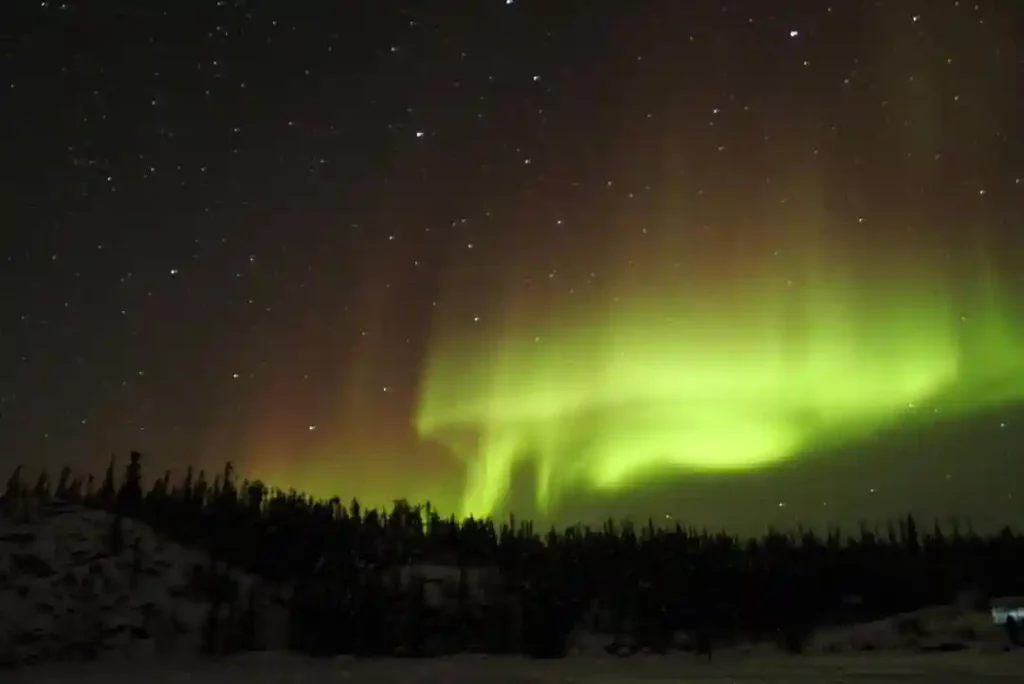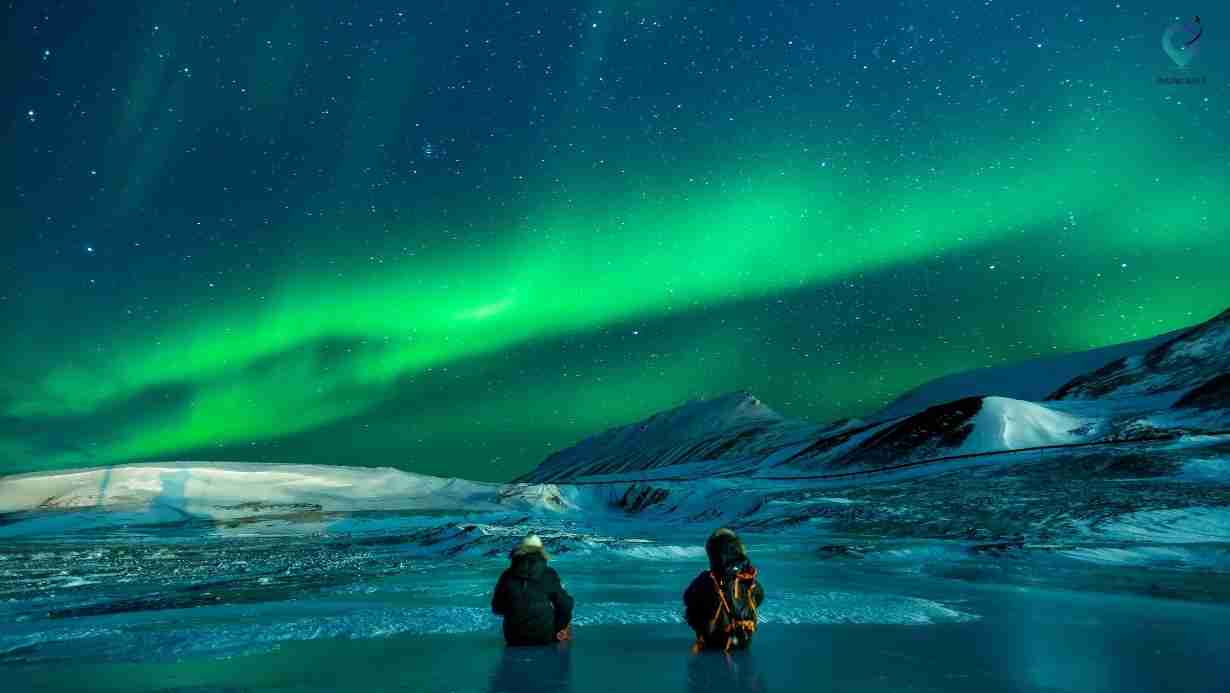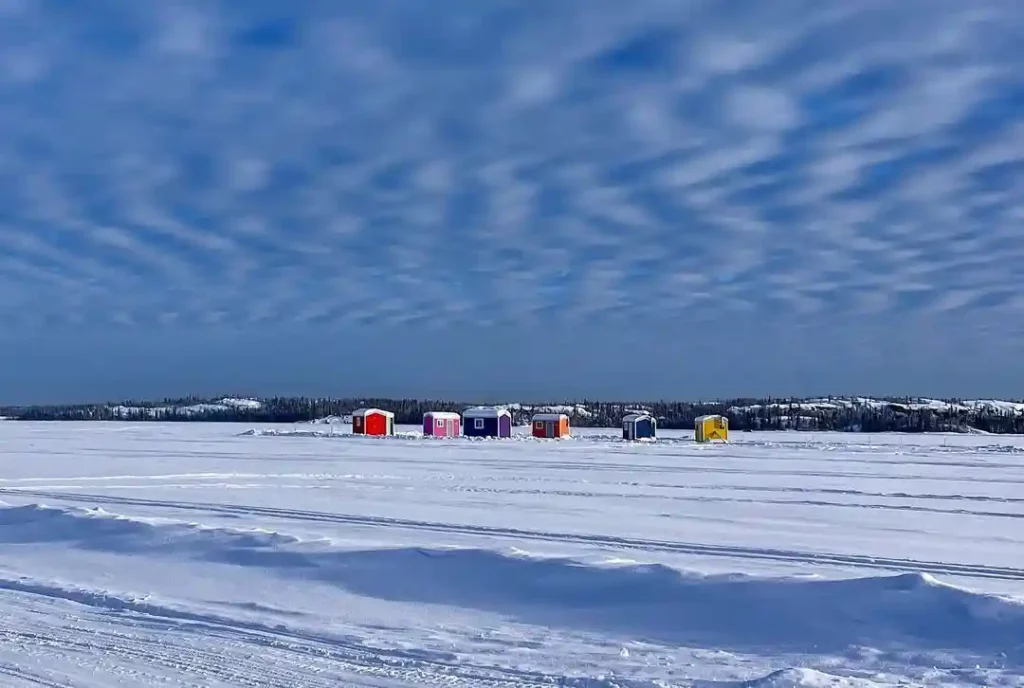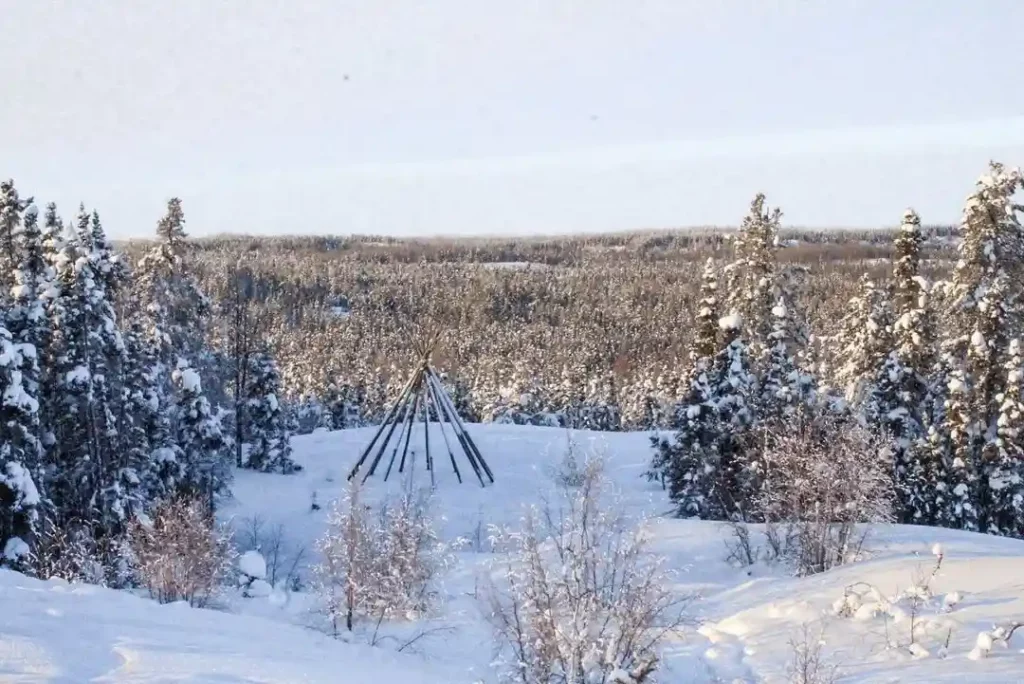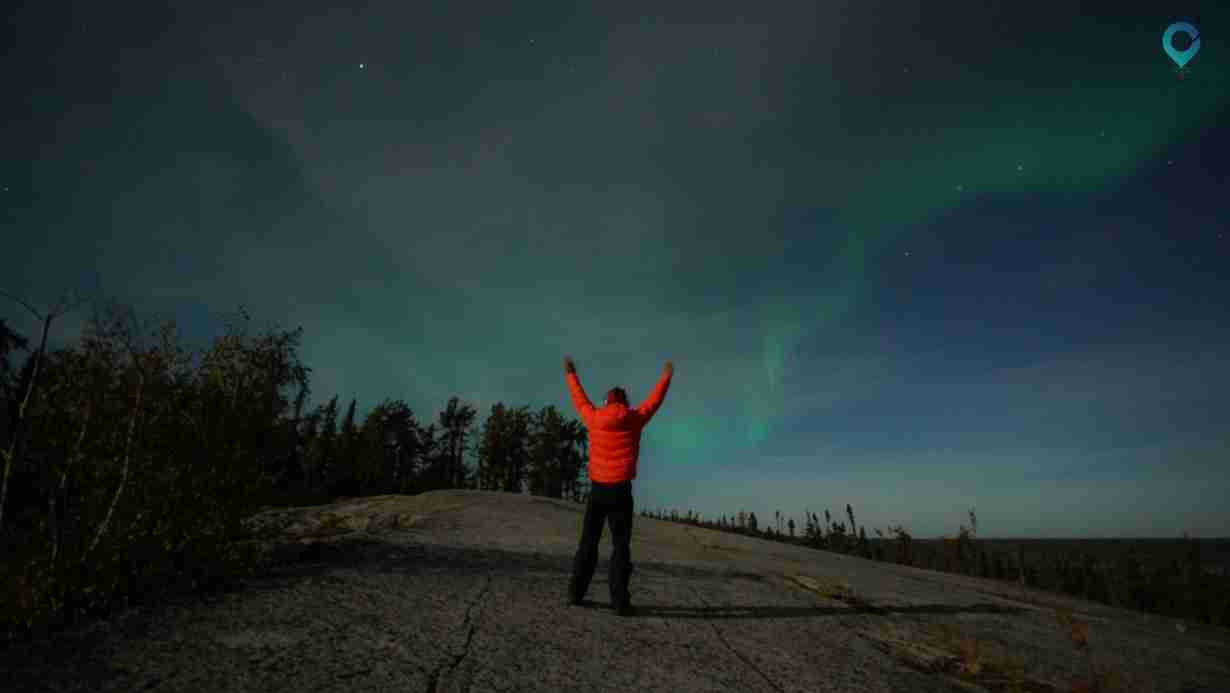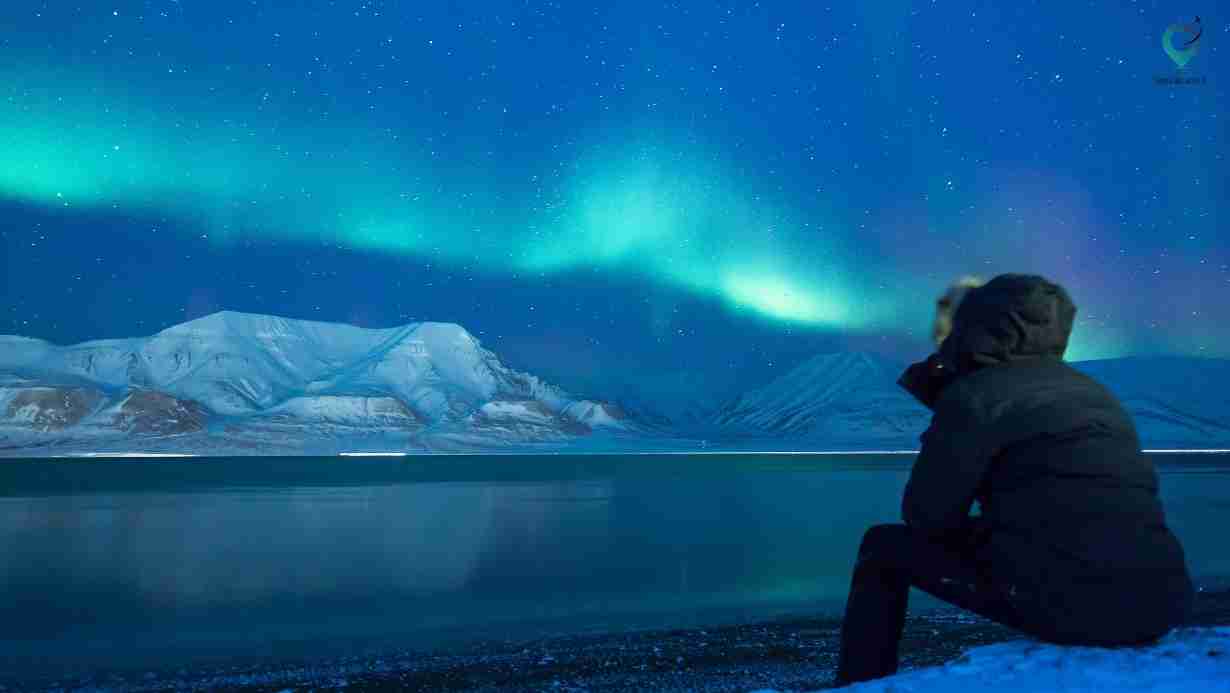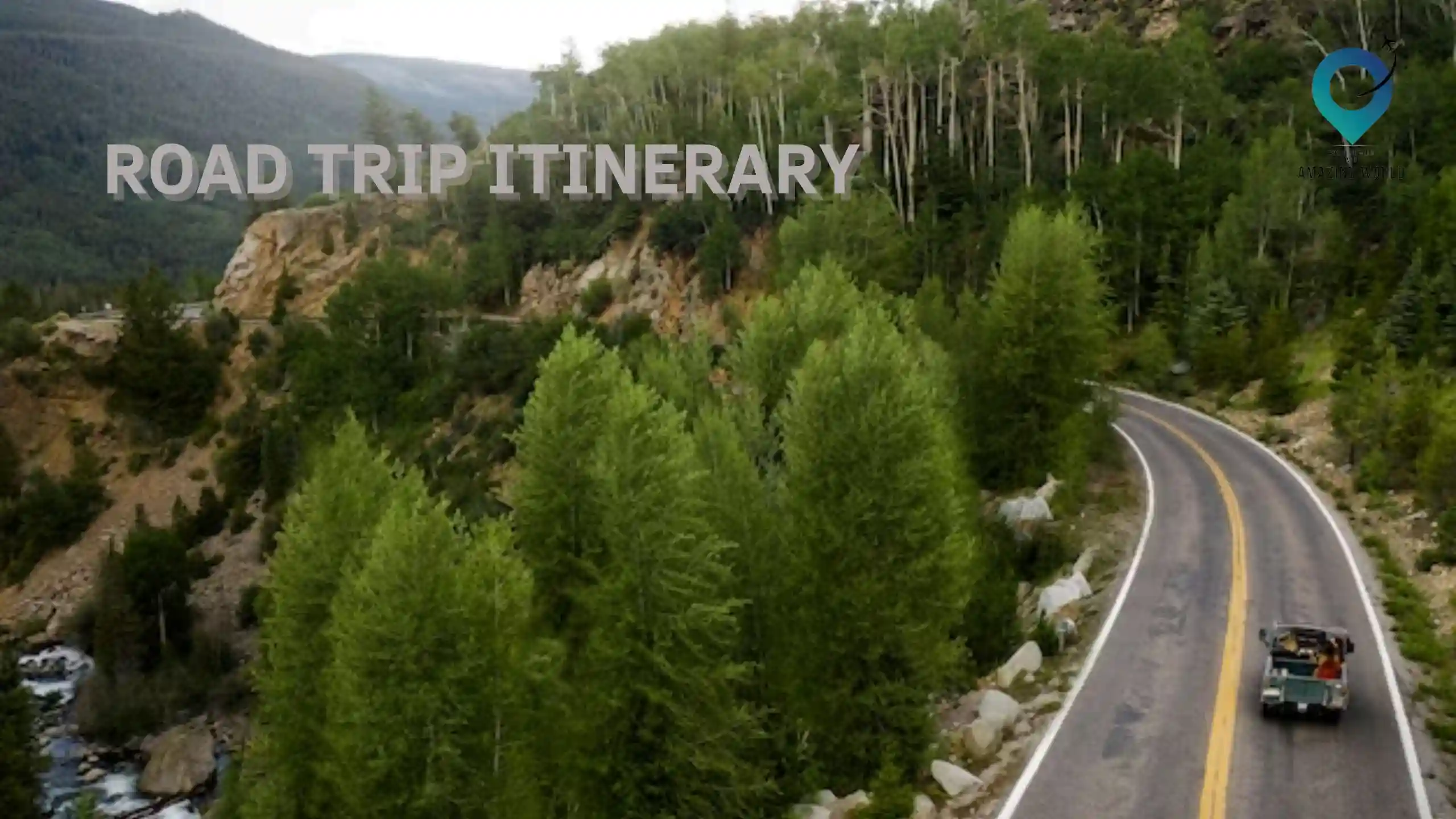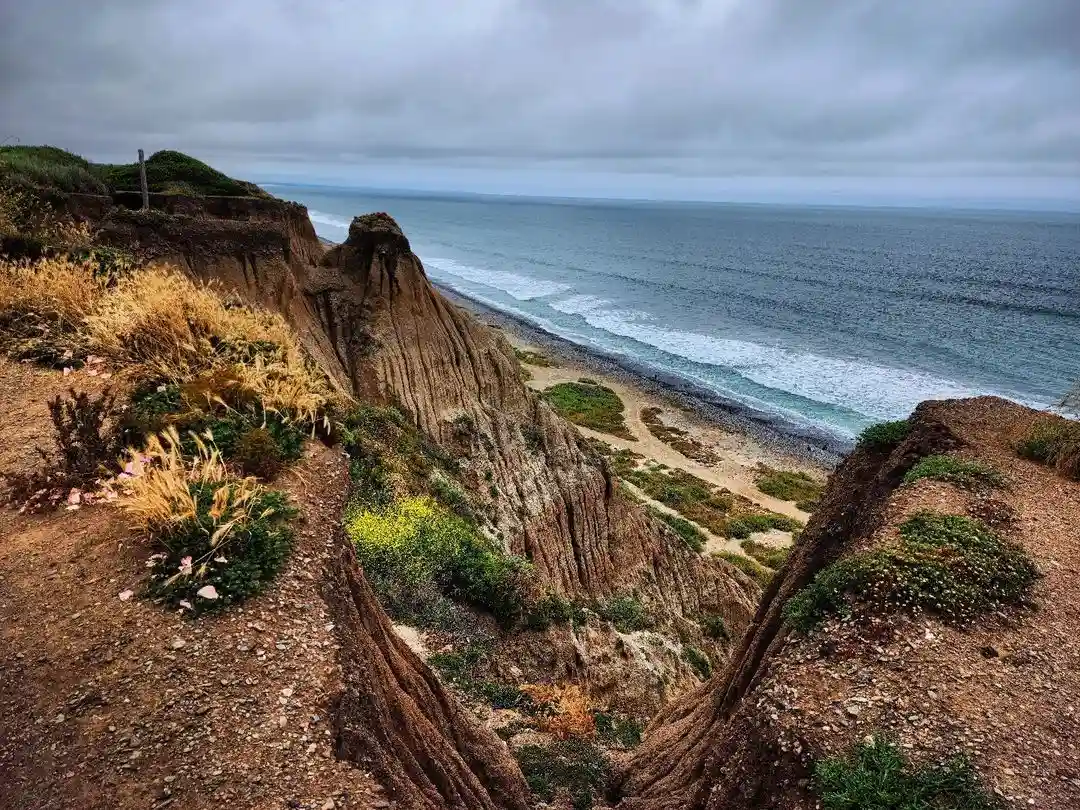Yellowknife Northern Lights trip in 2023 | Best Time and Place
Table of Contents
Toggle
Are you an avid seeker of celestial wonders, yearning for an unforgettable rendezvous with the mystical spectacle of nature’s grandeur? In 2023, behold the enchanting allure of the Yellowknife Northern Lights, an ethereal dance of vibrant hues that illuminates the Arctic skies. Discovering the best time and place to witness this awe-inspiring phenomenon is an exhilarating journey in itself.
In the heart of the Canadian wilderness lies Yellowknife, a pristine haven renowned for its breathtaking vistas of the Aurora Borealis. Finding the perfect moment to witness this natural marvel and identifying the optimal location for this celestial spectacle can turn a trip into an unforgettable experience.
Explore the depths of this article to unravel the secrets behind the ideal time and the most captivating spots to witness the Northern Lights in Yellowknife during 2023.
The Magic of the Northern Lights
The Northern Lights, also known as the Aurora Borealis, is
a celestial display of vibrant colors that illuminate the night sky. This breathtaking phenomenon occurs when charged particles from the sun collide with Earth’s atmosphere, creating a luminous dance of greens, purples, and pinks.
The experience of standing beneath this ethereal spectacle is truly otherworldly, leaving spectators in awe of nature’s grandeur.
What Makes Yellowknife Special for Northern Lights Viewing?
Yellowknife, located in Canada’s Northwest Territories, is renowned as one of the best places in the world to witness the Northern Lights, also known as the Aurora Borealis. This phenomenon occurs when charged particles from the sun collide with gases in the Earth’s atmosphere, creating mesmerizing dancing lights in the night sky.
The city’s high latitude and clear skies provide the perfect conditions for a stunning aurora display, making it a magnet for travelers seeking this celestial spectacle.
Planning Your Northern Lights Trip
To increase your chances of witnessing a spectacular aurora display during your visit to Yellowknife, consider the following tips:
- Choose the Right Time: Aim for a visit during the peak season, from December to March, to maximize your chances of seeing the Northern Lights. Plan your trip around the new moon phase to avoid bright moonlight that may hinder visibility.
- Stay at the Right Place: Opt for accommodations away from city lights to reduce light pollution and enhance your viewing experience. Many lodges and resorts outside Yellowknife offer cozy cabins and guided tours for Aurora chasers.
- Stay Updated on Solar Activity: Keep an eye on solar activity forecasts and the local aurora forecast to know when the chances of Northern Lights sightings are higher.
- Dress for the Arctic: Be prepared for extremely cold temperatures as you will be spending long hours outside. Dress in layers and wear insulated, waterproof clothing to stay warm and comfortable.
The Best Time to Visit Yellowknife for the Northern Lights
While the Northern Lights can be observed throughout the year, the best time to plan your trip to Yellowknife for an optimal viewing experience is during the winter months. From late August to early April, the nights are longer, creating more opportunities to witness the auroras in their full glory.
The peak season typically falls between December and March when the skies are darkest and the auroras are most vibrant.
Best Places to See Aurora Light in Yellowknife
With its unique geographical location away from light pollution, Yellowknife offers several excellent spots to witness the captivating Aurora Borealis. Here are some of the best places to see the Northern Lights in Yellowknife:
Prelude Lake Territorial Park: Just a short drive from Yellowknife, Prelude Lake is a popular location for Aurora viewing. Its frozen surface and surrounding wilderness provide a serene setting to witness the dancing lights.
- Cameron Falls Trail: For those who love combining nature with Aurora watching, the Cameron Falls Trail offers a rewarding experience. After a scenic hike, you’ll reach a viewpoint where you can enjoy the Northern Lights in all their splendor.
- Yellowknife Bay: Located near the city center, Yellowknife Bay offers convenience for tourists who want a glimpse of the lights without venturing too far. The ice road over the bay during winter provides a unique vantage point.
- Vee Lake: Vee Lake is another fantastic location for viewing the Aurora. Its peaceful surroundings and dark skies make it an ideal spot for photographing the lights.
- Ingraham Trail: This scenic route leading to various lakes and lookouts outside Yellowknife offers multiple opportunities for Aurora spotting. Some favorite spots along the Ingraham Trail include Pontoon Lake and Reid Lake Territorial Park.
- Prospector’s Trail: Just a short walk from downtown, Prospector’s Trail is an easily accessible location for viewing the Northern Lights. The trail’s proximity to the city makes it a convenient option for a quick Aurora experience.
- Madeline Lake: For a more remote experience, Madeline Lake provides a tranquil setting away from city lights. It’s an ideal place for those seeking a more intimate connection with the Aurora.
- Dettah Ice Road: During winter, the Dettah Ice Road offers an exciting way to experience the Northern Lights. The ice road provides access to Dettah, a picturesque community on the shores of Great Slave Lake.
- Hidden Lake Territorial Park: A bit further from Yellowknife, Hidden Lake Territorial Park rewards adventurers with stunning vistas of Aurora and a chance to connect with nature.
- Aurora Village: While not a natural location, Aurora Village is designed specifically for optimal Aurora viewing. Cozy heated teepees and expert guides ensure a comfortable and unforgettable experience.
Remember that the Northern Lights are a natural phenomenon, and their appearance depends on solar activity and weather conditions. It’s essential to check local Aurora forecasts and be patient for the lights to grace the night sky with their mesmerizing display.
THE BEST MONTHS TO GO AURORA VIEWING IN YELLOWKNIFE, NWT
Late August to Late September
The late summer and early autumn months offer a unique opportunity to witness the Northern Lights in Yellowknife. During this period, the days are still relatively long, providing ample time for outdoor activities and sightseeing. As the nights grow longer, the chances of encountering the aurora increase significantly.
The skies are typically clear and free from cloud cover, maximizing visibility for the celestial spectacle. While the aurora activity may not be as intense as during the winter months, the vibrant hues and mesmerizing dance of the lights are still awe-inspiring.
October to March
The heart of the aurora viewing season in Yellowknife spans from October to March, coinciding with the long, dark nights of winter. This is when the aurora is most active, producing captivating displays of shimmering colors across the sky. The clear, cold air of winter further enhances the visibility of the Northern Lights.
However, it’s important to be prepared for the harsh winter conditions, with temperatures often dipping below freezing. Layers of warm clothing, sturdy footwear, and a sense of adventure are essential for enjoying the aurora experience during this time.
April to Mid-May
As spring approaches, the aurora activity starts to wane, but the chances of witnessing the Northern Lights remain high. The days grow longer, offering more opportunities to explore Yellowknife’s natural beauty during the daytime.
The skies tend to be clearer in spring, providing optimal conditions for observing the aurora’s ethereal dance. While the displays may not be as frequent or intense as during the winter months, the beauty and serenity of the aurora remain captivating.
Additional Tips for Aurora Viewing in Yellowknife
To maximize your chances of witnessing the Northern Lights in Yellowknife, consider these additional tips:
- Venture away from city lights: The urban glow can obscure the delicate visibility of the aurora. Seek out locations away from the city center, where the night sky remains dark and unobstructed.
- Embrace the warmth: Yellowknife winters can be brutally cold, with temperatures plummeting far below freezing. Dress in layers, including a warm base layer, insulating mid-layers, and a windproof outer layer. Don’t forget warm gloves, a hat, and comfortable footwear.
- Exercise patience: Witnessing the aurora requires patience and perseverance. The lights may not appear immediately, so be prepared to wait and keep your eyes scanning the sky.
- Capture the moment: Bring a camera with a tripod to capture the breathtaking beauty of the aurora. Long exposure settings will allow you to capture the vibrant colors and intricate details of the Northern Lights.
Safety Tips for the Trip
- Dress Appropriately: Yellowknife experiences extremely cold temperatures during the winter months. Dress in layers and ensure you have a good-quality winter jacket, thermal clothing, gloves, a hat, and warm insulated boots. Keeping warm is crucial for a comfortable and safe experience.
- Stay Hydrated: Despite the cold weather, it’s essential to stay hydrated during your trip. Cold air can be dehydrating, so be sure to drink plenty of water throughout the day.
- Follow Expert Guidance: If you plan to explore the wilderness or take part in any guided tours, always listen to the advice of experienced guides. They know the terrain, weather conditions, and potential hazards, ensuring your safety throughout the journey.
- Driving Precautions: If you’re renting a vehicle or driving in the region, be cautious of icy roads and low visibility during snowstorms. Drive at safe speeds and familiarize yourself with winter driving techniques.
- Stay on Designated Paths: While exploring natural areas, such as parks or trails, stick to designated paths and marked routes. Straying off the path can be dangerous and harmful to the delicate ecosystem.
- Be Aware of Wildlife: Yellowknife is located in an area with diverse wildlife. While the chances of encountering dangerous animals are low, it’s still essential to be cautious and keep a safe distance from wildlife.
- Emergency Kit: Carry a well-stocked emergency kit with you, including first-aid supplies, a flashlight, extra batteries, a multi-tool, and high-energy snacks.
- Inform Others of Your Plans: If you’re going on outdoor adventures or aurora viewing tours, inform someone you trust about your plans and expected return time. This way, they can take action if you don’t return as scheduled.
- Cold Weather Survival Skills: If you plan to venture into the wilderness, familiarize yourself with basic cold weather survival skills, such as building a shelter, starting a fire, and navigating in snowy conditions.
- Aurora Viewing Safety: When observing the Northern Lights, be mindful of your surroundings. Avoid slippery or uneven terrain and be cautious when moving around in the dark.
- Stay Warm in Vehicles: If you’re aurora hunting by car, keep blankets, extra clothing, and a thermos with a hot drink inside your vehicle. In case you encounter any issues, being prepared can make a significant difference.
- Respect the Environment: Yellowknife’s wilderness is pristine and fragile. Respect nature by not leaving any litter or disturbing wildlife, and ensure you leave the area as you found it.
By following these safety tips, you can fully enjoy the wonder of the Northern Lights in Yellowknife while prioritizing your well-being throughout your trip.
Attractions in Yellowknife
Yellowknife offers a host of attractions that go beyond the mesmerizing Northern Lights. Here are some must-visit places and activities to explore during your trip:
- Prince of Wales Northern Heritage Centre: Immerse yourself in the rich cultural heritage of the Northwest Territories at this exceptional museum. Discover exhibits showcasing indigenous art, artifacts, and the history of Yellowknife and the surrounding regions.
- The Ice Road: If you visit during the winter months, don’t miss the opportunity to experience the famous Ice Road. When frozen, Great Slave Lake becomes a vast highway, connecting Yellowknife to nearby communities. It’s a unique and thrilling way to explore the area.
- Old Town: Wander through the charming streets of Old Town, where you’ll find historic buildings, boutique shops, art galleries, and cozy cafes. This area exudes a nostalgic charm and is perfect for leisurely strolls.
- NWT Diamond Centre: Yellowknife is renowned for its diamond mining, and at the NWT Diamond Centre, you can learn about the diamond industry’s history and witness the crafting of beautiful gemstones.
- Yellowknife Farmers Market: If you’re in town during the summer, don’t miss the vibrant Yellowknife Farmers Market. Here, you can savor local produce, crafts, and unique handmade items.
- Bush Pilots’ Monument: This iconic monument pays homage to the brave bush pilots who played a vital role in connecting remote communities across the vast Northern wilderness.
- Ragged Ass Road: Take a light-hearted trip down Ragged Ass Road, known for its quirky name. It’s a playful nod to the city’s early days when prospectors and pioneers settled in the area.
- Aurora Village: While the Northern Lights are visible from various locations, Aurora Village offers a special experience with cozy heated teepees, hot drinks, and unobstructed views of the dancing lights.
- Cameron River Falls: Embark on a short hike to Cameron River Falls, a beautiful waterfall just outside Yellowknife. The trail offers picturesque views and a chance to connect with nature.
- Climb Pilot’s Monument: Head up to Pilot’s Monument for a panoramic view of Yellowknife and the surrounding lakes. It’s a great spot to watch the sunset and admire the city’s beauty from above.
- Northern Arts and Cultural Centre (NACC): Catch a live performance, concert, or theater show at the NACC, which hosts a variety of artistic events showcasing local and visiting talent.
- Somba K’e Civic Plaza: Visit the heart of Yellowknife, Somba K’e Civic Plaza, a vibrant public space often hosting events, festivals, and gatherings that celebrate the city’s diverse culture.
Yellowknife’s attractions offer a blend of cultural experiences, historical sites, and natural wonders, making it a destination that captivates both the adventurous and the culturally inclined traveler.
Conclusion
Yellowknife offers a remarkable opportunity to witness the Northern Lights in all their splendor. By planning your trip during the best time and staying at the right place, you can increase your chances of experiencing this magical display of lights.
Embrace the beauty of the Arctic and create unforgettable memories as you immerse yourself in the awe-inspiring phenomenon of the Northern Lights during your 2023 Yellowknife adventure.
How much did you like Our detailed insider Yellowknife Northern Lights trip in 2023 | Best Time and Place? Review Also, please share these Blogs with your friends on social media.
Related Post:-
- Northern Lights in Greenland
- Northern Lights in Sweden
- Northern Lights in Iceland
- Northern Lights in Finland
- Northern Lights in Norway
Yellowknife Northern Lights FAQs:
What makes Yellowknife an ideal destination for witnessing the Northern Lights?
Yellowknife’s remote location, away from light pollution, provides optimal conditions for observing the Northern Lights.
Is there a guarantee that I’ll see the Northern Lights during my trip?
While Yellowknife offers some of the best chances for witnessing the Aurora Borealis, it ultimately depends on solar activity and weather conditions.
Can I see the Northern Lights from downtown Yellowknife?
Though the lights are occasionally visible from the city center, it’s best to head to darker areas outside the city for an unobstructed view.
What camera equipment is recommended for photographing the Northern Lights?
A DSLR or mirrorless camera with manual settings and a wide-angle lens will help you capture the lights effectively.
Are there any cultural experiences to enjoy in Yellowknife?
Yes, Yellowknife’s rich indigenous culture offers various opportunities to explore and learn about the local heritage and traditions.
Northern Lights: Top 5 Places & Times to See Northern Lights in Canada 2024
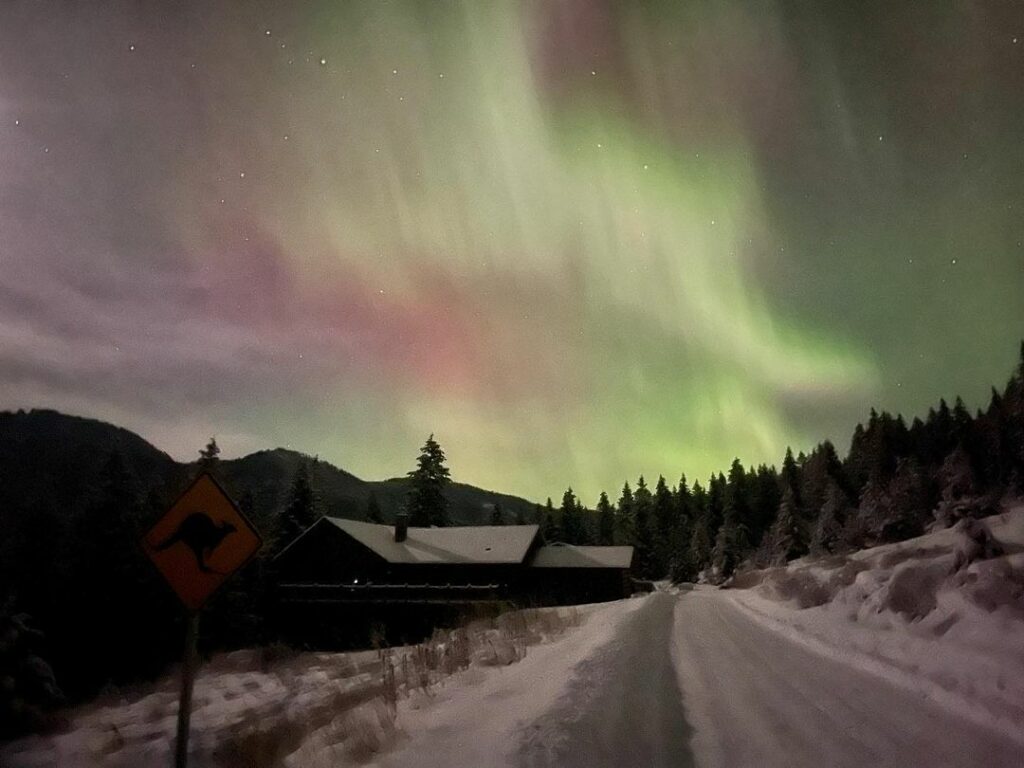
Are you excited about seeing the stunning Northern Lights in Canada? We’re here to guide you through the best places and times to witness this magical spectacle in 2024. We’ll take you to five amazing locations—Churchill, Yellowknife, Whitehorse, Tofino, and Banff National Park—where you can experience the breathtaking colors of the Aurora Borealis. We’ll show you when and where to go to have the best chance of seeing this incredible natural display. Get ready to be amazed by the beautiful lights in the sky!”
In this article, we will guide you through the top five places to see the Northern Lights in Canada, highlighting Churchill, Manitoba; Yellowknife, Northwest Territories; Whitehorse, Yukon; Tofino, British Columbia; and Banff National Park, Alberta.
Get ready to immerse yourself in the wonders of the Aurora Borealis and experience the magic of the Northern Lights in these remarkable Canadian destinations.
1. Churchill, Manitoba
Nestled on the shores of Hudson Bay in Manitoba, Churchill stands as a premier destination for witnessing the Northern Lights. Its unique geographical location at the auroral oval, combined with favorable atmospheric conditions, makes it an ideal spot to experience this celestial phenomenon.
Churchill’s high latitude, situated at approximately 58 degrees north, places it right in the heart of the Northern Lights belt. The auroras here are known for their intensity and frequency, offering visitors an excellent chance to witness this incredible spectacle. The town’s relatively flat terrain and minimal light pollution further enhance the visibility of the auroras.
To make the most of your Northern Lights adventure in Churchill, you can rely on the expertise of tour operators specializing in Aurora viewing. They offer guided tours and expeditions that maximize your chances of witnessing the auroras at their peak.
Additionally, Churchill provides a range of accommodations catering specifically to Northern Lights enthusiasts, ensuring a comfortable and memorable stay.
2. Yellowknife, Northwest Territories
In the remote wilderness of the Northwest Territories, Yellowknife emerges as a haven for Northern Lights seekers. Its pristine natural surroundings, expansive dark skies, and favorable weather conditions create an idyllic setting for witnessing the Aurora Borealis.
As the capital city of the Northwest Territories, Yellowknife offers a range of viewing spots and activities that make your Northern Lights experience truly remarkable. One such popular spot is the Aurora Village, a purpose-built site designed to provide optimal views of the Northern Lights. Here, you can witness the ethereal display from cozy heated teepees, capturing the essence of the Canadian wilderness.
Apart from the Aurora Village, you can also explore other breathtaking locations such as Cameron Falls, Prelude Lake, and Prosperous Lake. These spots offer picturesque landscapes that serve as the perfect backdrop for the dancing lights above.
3. Whitehorse, Yukon
Situated in the breathtaking Yukon Territory, Whitehorse is a prime destination for those seeking the Northern Lights’ captivating beauty. The vast wilderness and dramatic landscapes of the Yukon create an enchanting environment that sets the stage for a remarkable aurora-viewing experience.
To maximize your chances of witnessing the Northern Lights in Whitehorse, it’s recommended to visit between the months of September and April, when the nights are longer and darker. Popular vantage points like Miles Canyon and Fish Lake offer unobstructed views of the auroras, immersing you in their otherworldly glow.
While in Whitehorse, you can also indulge in other winter activities such as dog sledding, snowshoeing, and ice fishing. These additional experiences complement your Northern Lights adventure, providing a well-rounded and unforgettable journey in the Canadian wilderness.
4. Tofino, British Columbia
While Tofino is renowned for its rugged coastlines and pristine beaches, it also offers a distinctive opportunity to witness the Northern Lights. Located on the western coast of Vancouver Island in British Columbia, Tofino provides a contrasting landscape for aurora viewing.
The best times of the year to catch a glimpse of the Northern Lights in Tofino are during the months of October to March. The cool, crisp nights and clear skies contribute to successful sightings. Tofino’s coastal location adds a special touch to the experience, as you can witness the auroras against the backdrop of crashing waves and serene beaches.
It’s important to note that Tofino’s proximity to the Pacific Ocean brings a higher likelihood of cloud cover. However, when the skies clear, the auroras paint the heavens with their celestial hues, creating an enchanting spectacle.
5. Banff National Park, Alberta
Nestled in the heart of the Canadian Rockies, Banff National Park offers a majestic setting for experiencing the Northern Lights. Its combination of natural beauty, including towering mountains and crystalline lakes, along with its dark skies, creates an optimal environment for aurora sightings.
To enhance your Northern Lights experience in Banff, head to iconic viewpoints such as Lake Minnewanka, Moraine Lake, and Bow Lake. These locations provide unobstructed views of the night sky, allowing you to witness the dancing lights in all their glory.
Popular Northern Lights Trip in Canada
|
Location |
Description |
|
Churchill, Manitoba |
Known for intense and frequent auroras, guided tours are available for optimal viewing, minimal light pollution, and accommodations catered for aurora enthusiasts. |
|
Yellowknife, Northwest Territories |
Remote area with expansive dark skies, specialized facilities like Aurora Village, multiple viewing spots, guided experiences. |
|
Whitehorse, Yukon |
Vast wilderness, longer and darker nights from September to April, popular viewing spots like Miles Canyon and Fish Lake. |
|
Tofino, British Columbia |
Coastal location offering sightings during specific times (October to March), potential coastal backdrop for aurora viewing. |
|
Banff National Park, Alberta |
Majestic setting amidst the Canadian Rockies, iconic viewpoints like Lake Minnewanka, Moraine Lake, and Bow Lake. |
Additionally, you can engage in various activities like nighttime photography workshops, stargazing tours, and wildlife viewing. These activities add depth to your adventure, allowing you to immerse yourself in the beauty of Banff while waiting for the Northern Lights to appear.
Canadian Insider Tips to Experience Aurora Borealis
here are some insider tips to enhance your experience of witnessing the Aurora Borealis (Northern Lights) in Canada:
- Timing and Seasonality: Plan your visit between September and April, as this period offers longer, darker nights—ideal for Northern Lights viewing. The peak seasons are generally during winter months when skies tend to be clearer.
- Location Selection: Choose your viewing location wisely. Opt for areas away from city lights and with minimal light pollution to maximize visibility. Remote destinations like Churchill, Yellowknife, Whitehorse, Tofino, or Banff National Park are known for their optimal viewing conditions.
- Weather Monitoring: Keep an eye on weather forecasts. Clear, cloudless skies greatly increase your chances of seeing the auroras. Many apps and websites offer aurora forecasts and real-time updates on solar activity, aiding in better predictions.
- Local Knowledge and Guides: Engage with local guides or tour operators experienced in Northern Lights excursions. They possess valuable insights into prime viewing spots, weather patterns, and offer expert guidance to increase your chances of witnessing the auroras.
- Patience and Flexibility: Be patient as sightings are natural phenomena influenced by various factors. Staying multiple nights increases the likelihood of witnessing the lights. Flexibility in your travel plans allows you to adapt to weather changes or sudden aurora activity.
- Photography Preparation: If capturing the Northern Lights is on your agenda, familiarize yourself with your camera settings beforehand. Use a tripod, longer exposures, and lower ISO settings for better results. Practice in low-light conditions prior to your trip.
- Comfort and Warmth: Northern Lights viewing can involve extended periods outdoors in cold climates. Dress in multiple layers, wear warm clothing, and bring blankets or portable heat sources for comfort during the waiting periods.
- Cultural Experiences: Explore the local culture and traditions surrounding the Northern Lights. Indigenous communities often have rich folklore and stories related to the auroras, providing a deeper understanding and appreciation of this natural wonder.
- Alternative Activities: While waiting for the Northern Lights, engage in other winter activities available at these destinations, such as dog sledding, snowshoeing, or wildlife tours. This enriches your overall experience even if the auroras are elusive.
By considering these tips and preparing adequately, you can enhance your Northern Lights experience in Canada and increase your chances of witnessing this awe-inspiring natural phenomenon.
Conclusion
Embarking on a journey to witness the Northern Lights in Canada is an experience of a lifetime. Churchill, Yellowknife, Whitehorse, Tofino, and Banff National Parks all offer unique landscapes and atmospheric conditions that make them prime locations for aurora viewing.
Whether you choose the flat tundra of Churchill, the remote wilderness of Yellowknife, the vast expanses of the Yukon in Whitehorse, the contrasting coastal scenery of Tofino, or the majestic Canadian Rockies in Banff, each destination guarantees an unforgettable encounter with the Northern Lights.
Pack your bags, prepare your camera, and get ready to be mesmerized by the dance of colors across the night sky. Canada awaits, ready to unveil the magic of the Northern Lights.
How much did you like Our detailed insider Northern Lights in Sweden: All you need to know before Your Visit? Review Also, please share these Blogs with your friends on social media.
Related Post:-
- Northern Lights in Greenland
- Northern Lights in Sweden
- Northern Lights in Iceland
- Northern Lights in Finland
- Northern Lights in Norway
Northern Lights in Canada FAQs
What are the best times of the year to see the Northern Lights in Canada?
The best times to see the Northern Lights in Canada are between September and April, when the nights are longer and darker.
How long does the Northern Lights season last in Canada?
The Northern Lights season in Canada typically lasts from September to April, offering several months of prime aurora viewing opportunities.
Are there any specific accommodations or tours recommended for Northern Lights viewing in Canada?
Yes, there are specific accommodations and tour operators that cater to Northern Lights enthusiasts in Canada. In Churchill, Yellowknife, Whitehorse, Tofino, and Banff, you’ll find a range of options tailored to enhance your Northern Lights experience.
What camera settings and photography tips should I consider for capturing the Northern Lights?
When photographing the Northern Lights, it’s essential to use a tripod for stability, set your camera to manual mode, use a wide-angle lens with a low aperture (f/2.8 or lower), and experiment with different exposure times to capture the auroras’ vibrant colors.
Can the Northern Lights be seen from major Canadian cities like Toronto or Vancouver?
While it is possible to see the Northern Lights from major Canadian cities like Toronto and Vancouver on rare occasions, it is not very common due to light pollution. For the best chances of witnessing the auroras, it is recommended to travel to more remote locations with darker skies, such as Churchill, Yellowknife, Whitehorse, Tofino, or Banff.
Are there any other provinces in Canada known for Northern Lights sightings?
Yes, apart from the mentioned destinations, other provinces in Canada are known for Northern Lights sightings. Some notable provinces include Saskatchewan, Alberta, and Newfoundland and Labrador. Each of these regions offers unique experiences and opportunities to witness the Northern Lights.
How do the Northern Lights in Canada compare to other countries like Norway or Iceland?
The Northern Lights in Canada offer a spectacular display of vibrant colors and dancing lights, similar to what you would experience in countries like Norway or Iceland. The advantage of Canada lies in its vast wilderness, which provides ample opportunities for unobstructed views of the auroras.
Are there any cultural or indigenous perspectives associated with the Northern Lights in Canada?
Yes, the Northern Lights hold cultural and indigenous significance in Canada. Many indigenous communities have traditional stories and beliefs associated with the auroras, considering them as spiritual and mystical phenomena. Exploring the cultural perspectives adds depth and understanding to the overall experience of witnessing the Northern Lights.
Are there any scientific research or monitoring initiatives focused on the Northern Lights in Canada?
Yes, there are scientific research and monitoring initiatives focused on the Northern Lights in Canada. Organizations such as the Canadian Space Agency and universities across the country conduct studies to better understand the auroras’ scientific aspects, including their formation and behavior.
What other natural attractions or activities can be combined with Northern Lights viewing in Canada?
Canada offers a plethora of natural attractions and activities that can be combined with Northern Lights viewing. From exploring stunning national parks, such as Jasper National Park or Gros Morne National Park, to engaging in winter sports like skiing or snowshoeing, there are numerous opportunities to immerse yourself in the beauty of Canada’s wilderness while awaiting the Northern Lights.

Meet David Hoper, a passionate travel Blog writer with 7+ years of experience in travel content. Through his exemplary storytelling and engaging narratives, he shares his experiences and brings destinations to life. With a keen eye for detail and a love for exploration, he has cultivated a diverse portfolio of travel blogs that inspire and inform readers worldwide.
